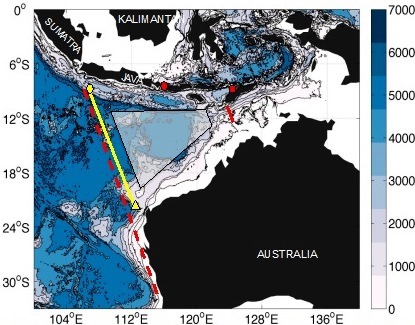[IIOE2-EP25] Integrated heat Dynamics of the Indian and Global Oceans
Lead Investigator and other key participant (s):
- Dr. Alejandra Sanchez-Franks , National Oceanography Centre, UK
alsf@noc.ac.uk - Dr. Janet Sprintall , (Collaborating Partner), Scripps Institution of Oceanography, USA
jsprintall@ucsd.edu - Dr. Adrian Matthews , (Collaborating Partner), University of East Anglia, UK
a.j.matthews@uea.ac.uk - Dr. Alan Koropitan , (Collaborating Partner), Bogor Agricultural University, Indonesia
alan@ipb.ac.id
Period of Project: 01 September, 2018 to 31 August, 2023
Brief description of the Project:
The recently recorded abrupt increase of heat uptake in the Indian Ocean has been projected to have a major impact on global climate variability. The overarching aim of this project is to describe and quantify the evolution of this heat uptake in the Indian Ocean and to understand its impact on the global ocean and climate. These aims will be carried out through the following objectives:
- Describe and understand the time and space-varying evolution of basin-wide heat content (at surface and at depth) in the Indian Ocean.
- Quantify upper ocean heat transport into and out of the Indian Ocean from the ITF outflow passages (Lombok, Ombai and Timor) and the Agulhas Current, and determine their overall contribution to the Indian Ocean upper heat content budget.
- Define the role of air-sea interaction vs. advection to understand which is the largest contributing factor to the Indian Oceans heat loss, and determine the processes dominating their variability.
- Resolve the dominant mechanisms of the Indian Ocean heat uptake and loss within the context of its impact on the global oceans and climate variability.
Region of study
This project will aim to get measurements at the mouth of the Indonesian Throughflow outflow passages, in a segment connecting the most northwest point of Australia to the western Lombok basin, using two separate glider campaigns. Each campaign will deploy two slocum gliders, equipped with ADCPs, ideal for measuring the transport of the ITF directly into the Indian Ocean basin. In the first campaign, the two ADCP slocum gliders will be deployed right before the onset of the southeast monsoon (June), and in the second campaign the two ADCPs slocums will be deployed before the onset of the northwest monsoon (December). The estimates of the outflow passages from the gliders will provide completely novel measurements that will be key in determining the heat transport into the Indian Ocean basin

Figure 1. Region of interest for the measurement of the Indonesian Troughflow outflow passages: Lombok Strait (red circle), the Ombai Strait (red square), and the Timor passage (res line). The segment covered by the gliders will extend from western Java to just northwest of Australia (yellow line). Yellow circle: Glider deployment. Yellow triangle: glider recovery. Red dashed line: IX01 XBT transect. The shaded region indicates where semidiurnal tides are strongest.

